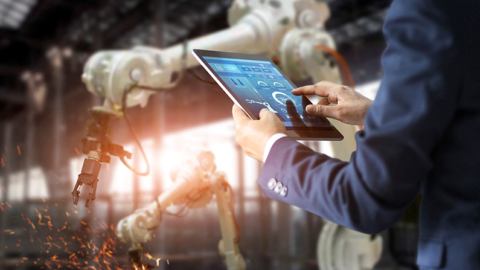
If there was an automation solution that helped your company improve productivity and profitability, create a safe working environment and pay back within a month, would you invest in it?
Collaboration robots (Cobot) and the applications around this technology are bringing such benefits to many businesses. The name Cobot stands for Collaborate Robot, demonstrating the ability to integrate robot features with human labor in an industrial production environment. This is a combination to look forward to as it is possible to free up the main workforce through automation, while solving employment problems for workers. According to Robotic Online magazine, the current number of cobots is forecast to increase from 3% to 34% by 2025, and investment in Cobot technology could reach $ 13 billion.
Here are some of Cobot’s unique advantages that can help businesses improve their productivity and profitability:
Flexible design
Cobot has a variety of designs, but the arm joints are connected to the base in a common format. Cobot has a variety of tools included, such as a handle, a knife, etc, that can be attached to the head of an arm, depending on the job the cobot needs to do. With its swivel angle and flexible coupling, Cobot can operate independently with just one preset process or in collaboration with people. Either way, the robotic arms guarantee high machining accuracy while keeping the operator safe.
Easy controls
An operator can easily use a smartphone or tablet to set up, operate and monitor the production process. Cobots that are integrated with artificial intelligence and machine learning have the ability to “learn from experience” by themselves after being “just holding hands”. Operations will be recorded in the cobot’s memory. From there, the cobots will automatically operate according to those memorized steps.
Quick installation
The installation for the cobot only takes a few hours, in contrast to the time it takes to install for industrial robots, which usually takes weeks or months.
Traditional robots are designed for certain applications and are usually fixed to a single location in a workshop. The cobots are more compact and can be moved to different locations. Thanks to sensor technologies and image analysis, the cobot can detect obstacles (including people), thereby adjusting the speed or stopping completely to avoid collisions as much as possible.
(To be continued)
Productivity and Quality Office